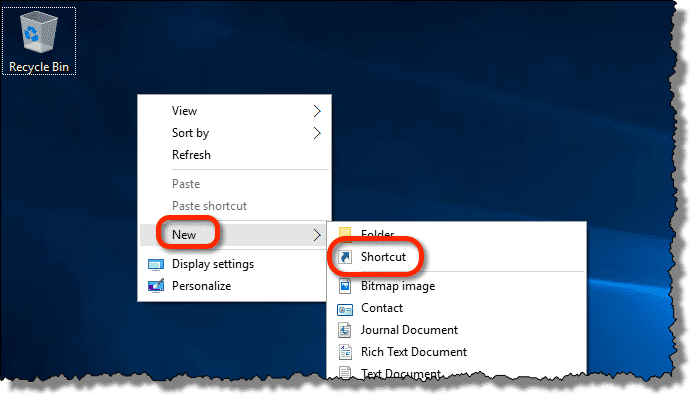

- HOW TO CREATE A SHORTCUT ON DESKTOP IN WINDOWS 8 HOW TO
- HOW TO CREATE A SHORTCUT ON DESKTOP IN WINDOWS 8 WINDOWS 10
- HOW TO CREATE A SHORTCUT ON DESKTOP IN WINDOWS 8 PC
- HOW TO CREATE A SHORTCUT ON DESKTOP IN WINDOWS 8 WINDOWS 8
HOW TO CREATE A SHORTCUT ON DESKTOP IN WINDOWS 8 WINDOWS 8
While this shortcut works in Windows 8 and 7, it won’t do so on Windows XP. Follow the earlier steps we showed you and that’s it. You’ll find that all folders or programs will be minimized and Desktop is the only one open. How about if you want to create a folder in the File Explorer and you want to create it on your desktop at the same time? It’s simple: press Windows key + D.

Simply open the File Explorer (or location where you want a new folder created), press Ctrl + Shift + N, and the new folder crops up in no time. This shortcut works on File Explorer just as well.

Step 3: When you see the confirmation dialog, click the Yes button to create the website. Step 2: Right-click on the empty area of the webpage/website and then click Create Shortcut option.
HOW TO CREATE A SHORTCUT ON DESKTOP IN WINDOWS 8 WINDOWS 10
Simply press Ctrl + Shift + N and you can see the new folder automatically created on your Desktop and ready for file storage or renaming. How do I create a shortcut to a website on my desktop in Windows 10 Step 1: Start the Internet Explorer browser and navigate to the website or webpage. But Windows 10, as well as 8 and 7, lets you create folders with a keyboard shortcut. On Desktop, you can create a new folder by right-clicking on an empty area, choosing New, and choosing Folder. Normally, we right-click in order to create a new folder. What are shortcut keys to create new folders in Windows 10?
HOW TO CREATE A SHORTCUT ON DESKTOP IN WINDOWS 8 HOW TO
Here’s a quick guide on how to create new folders, using shortcut keys. The great news is if you’re keen on creating a new folder, all it takes is a few keyboard buttons.
HOW TO CREATE A SHORTCUT ON DESKTOP IN WINDOWS 8 PC
Shortcut keys are a way to speed up your work routine and get better organized in your PC tasks. Follow the steps 4 to 8 from the first method above to complete the tutorial.Nifty PC tricks: How to create new folders, using shortcut keysįor some of us who work mostly with computers, it’s not fun to move and click the mouse at all times. In the next window, choose any name for the shortcut. In the next window, in the box under Type the location of the item, enter %windir%\system32\cmd.exe, and click Next, as shown below.Ĥ. Right-click on an empty space on desktop and choose New > Shortcut, as shown below.ģ. Go to desktop by minimizing all open windows. You can even delete the desktop shortcut and the remaining pins from taskbar and start will continue to work, as they are actually linking to %windir%\system32\cmd.exe. You can right-click the desktop shortcut and choose Pin to Taskbar or Pin to Start if you wish, as shown below. You can tell you opened an elevated command prompt from the title of the window Administrator: Command Prompt, as shown below.Ĩ. That's it, the desktop shortcut will now open an elevated command prompt. In the Advanced Properties window, check the box Run as administrator and click OK, then OK in the previous Command Prompt Properties window as well.

In the Command Prompt Properties Windows, select the tab Shortcut (it should be selected by default) and click Advanced, as shown below.ħ. Right-click the Command Prompt shortcut and choose Properties.Ħ. You can do that faster by pressing Win+D.ĥ. Minimize all open windows to get to the desktop. It opens a regular command prompt, so we'll have to alter its behavior in the next step.Ĥ. You will now have a new shortcut on Desktop, called Command Prompt. Right-click Command Prompt and choose Send to > Desktop (create shortcut), as shown below. This opens the Explorer at C:\Users\YourUser\AppData\Roaming\Microsoft\Windows\Start Menu\Programs\System Tools where you can see a few symbolic links (we briefly covered symbolic links in our Mklink explained article).ģ. Right-click the Command Prompt result and choose Open file location, as shown below. Open Search by typing Ctrl+S and enter cmd in the search box.Ģ. Here are the steps to create the elevated cmd shortcut. When you use this shortcut, depending on your User Account Control settings, you will get a UAC prompt or not. Note that if you are logged in as a regular user, you will be asked for Administrator credentials when opening the shortcut. In this tutorial we'll show you 2 methods for how to create a desktop shortcut to an elevated command prompt and pin it to taskbar or start screen. We explained before what an elevated command prompt is and how to open one in several ways under Windows 8.


 0 kommentar(er)
0 kommentar(er)
